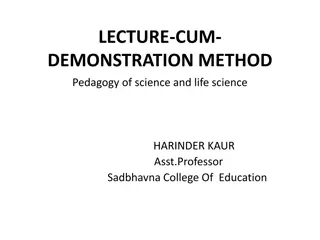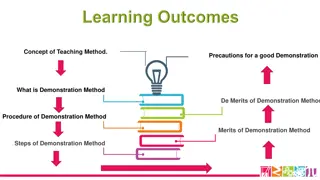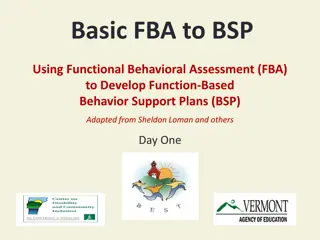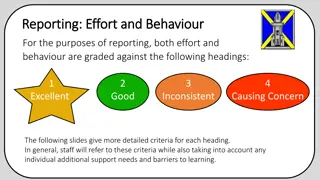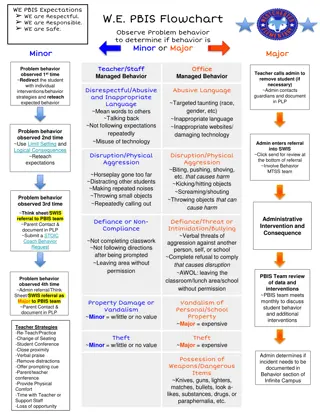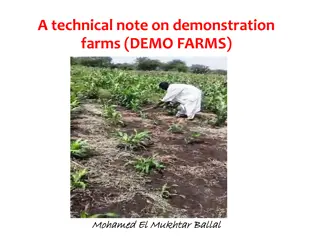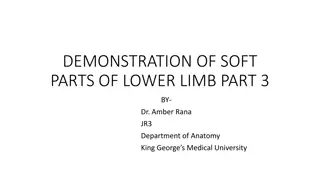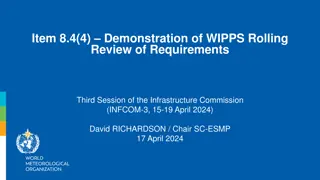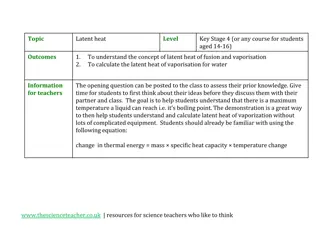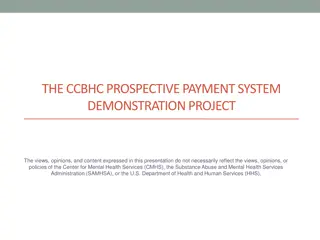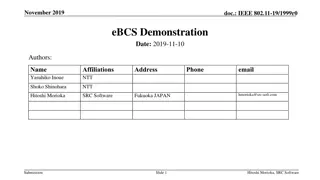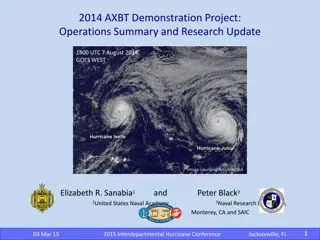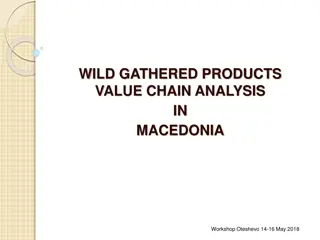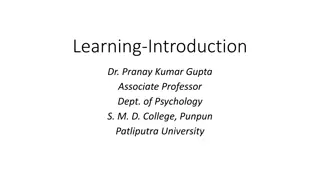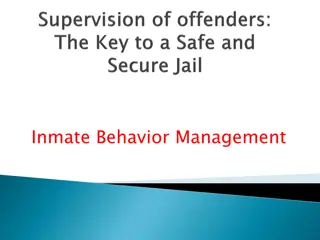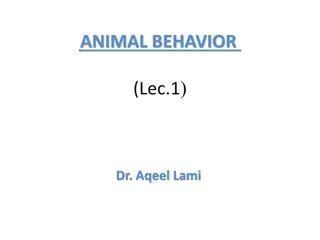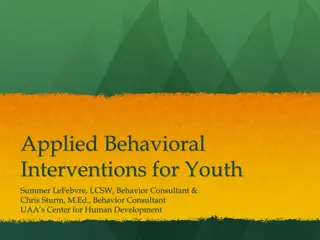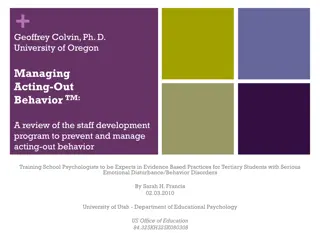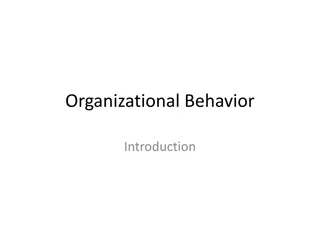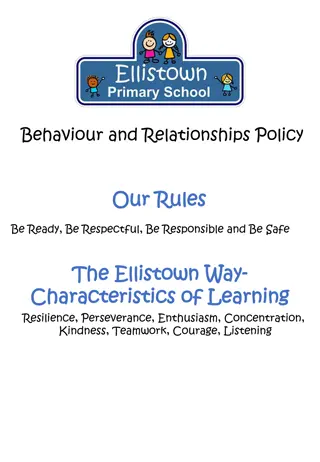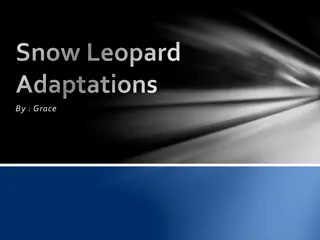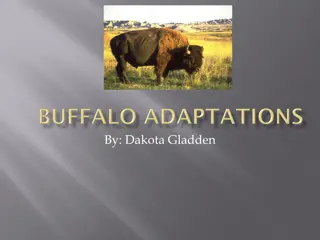Learning from Demonstration in the Wild: A Novel Approach to Behavior Learning
Learning from Demonstration (LfD) is a machine learning technique that can model complex behaviors from expert trajectories. This paper introduces a new method, Video to Behavior (ViBe), that leverages unlabelled video data to learn road user behavior from real-world settings. The study presents a vision pipeline for tracking road users and extends generative adversarial imitation learning with a curriculum-based training approach. The methodology involves modeling the problem as a Markov decision process to enable agents to mimic expert demonstrations and generalize to new scenarios.
Download Presentation

Please find below an Image/Link to download the presentation.
The content on the website is provided AS IS for your information and personal use only. It may not be sold, licensed, or shared on other websites without obtaining consent from the author. Download presentation by click this link. If you encounter any issues during the download, it is possible that the publisher has removed the file from their server.
E N D
Presentation Transcript
LEARNING FROM DEMONSTRATION IN THE WILD Author: F. Behbahani, K. Shiarlis, X. Chen, V. Kurin, S. Kasewa, C. Stirbu, et al ICRA 2019 Presenter: Youdong Ma
Content Introduction Motivation Contribution Methodology Results
1. Introduction Learning from demonstration (LfD) is a machine learning technique that can learn complex behaviours from a dataset of expert trajectories, called demonstrations. LfD is particularly useful in settings where hand-coding behaviour or engineering a suitable reward function is too difficult or labour intensive. However, nearly all methods rely on either artificially generated demonstrations (e.g., in laboratory setting) or those collected by specially deployed sensors.
2. Motivation These restrictions greatly limit the practical applicability of LfD, which to date has largely not been able to leverage the copious demonstrations available in the wild: those that capture behaviour that was occurring anyway using sensors that were already deployed for other purposes. In this paper, they propose video to behaviour (ViBe), a new approach to learn models of road user behaviour from unlabelled raw video data of a traffic scene collected from a single, monocular, initially uncalibrated camera with ordinary resolution.
3. Contribution The contributions of this paper are two-fold: First, they present a vision pipeline that can track different road users and map their tracked trajectories to 3D space and is competitive with the state-of-the art approaches for image space tracking. Second, they extend generative adversarial imitation learning(GAIL), a state-of-the-art LfD method, with a novel curriculum- based training method that enables our agents to gradually learn to mimic temporally extended expert demonstrations and successfully generalize to unseen situations.
4.1 How to model this problem Due to the large number of road users that may populate a traffic scenario, learning a centralized policy to control all agents simultaneously is impractical. They take an approach similar to that of independent Q-learning, where each agent learns its own policy, conditioned only on its own observations. The other actors are effectively treated as part of the environment. We can then treat the problem as one of single- agent learning and share the parameters of the policy across multiple agents. They model the problem as a Markov decision process(MDP). The MDP is defined by the tuple (S, A, P, R). S represents the set of environment states, A the set of actions, ?(??+1|??,??) the transition function, and ?(??,??) the reward function. We use ? for the stochastic policy learnt by our agent and ??for the expert policy which we can access only through a dataset ?? we denote sample trajectories as ??. They consist of sequences of observation- action pairs generated by the expert ??= {((?1 ?,?1 ?) ), . . . ,((?? ?,a? ?) )}.
4.2 Extracting Demonstrations There are three main steps detection, calibration, and tracking. For detection, our detector uses the bounding box output of a pre-trained model of Mask R-CNN based on the ResNet-101 architecture, pre-trained on the COCO dataset. For calibration, we obtain a topdown satellite image of the scene from Google Maps and add landmark points to both camera and satellite images. We then undistort the camera image and use the landmark points to calculate the camera matrix. Given the camera calibration we map the detected bounding boxes into 3D by assuming that the detected object is a fixed height above the ground, with the height depending on its class. For tracking multiple objects, Our multiple object tracking module is similar to that of Deep SORT, which makes use of an appearance model to make associations. For each scene, they train an appearance model using a Siamese network (SN).
4.3 Simulation They use Google Maps as a reference to build a simulation of the scene in Unity
4.4 Learning The simplest form of LfD is behavioural cloning (BC) which trains a regressor (i.e., a policy) to replicate the expert s behaviour given an expert state. BC works well for states covered by the training distribution but generalizss poorly due to compounding errors in the actions. GAIL avoids this by learning via interaction with the environment. GAIL aims to learn a DNN policy ??that cannot be distinguished from the expert policy ??. To do this, GAIL trains a discriminator ? , also a deep neural network, to distinguish between state-action pairs coming from expert and agent (Similar to GANs)
4.4 Learning GAIL optimises ??to make it difficult for the discriminator to make this distinction. Formally, the GAIL objective is: Here, ? outputs the probability that (s, a) originated from ??. As the agent interacts with the environment using ??, (s, a) pairs are collected and used to train ? . Then, GAIL alternates between a gradient step on to increase the objective function with respect to D, and an RL step on ? to decrease it with respect to ? Optimization of ? can be done with any RL algorithm using a reward function of the form ?(?,?) = log(? (?,?)).
4.4 Learning Given the trajectories extracted by the vision processing (section4.2), ViBe uses the simulator from section4.3 to learn a policy that matches those trajectories. Learning is based on GAIL, which leverages the simulator to train the agent s behaviour for states beyond those in the demonstrations, avoiding the compounding errors of BC However, in the original GAIL method, this interaction with the simulator means that the agent has control over the visited states from the beginning of learning. Consequently, it is likely to take bad actions that lead it to undesirable states, far from those visited by the expert, which in turn yields sparse rewards from the discriminator and slow agent learning.
4.4 Learning To address this problem, we propose Horizon GAIL, which, like BC, bootstraps learning from the expert s states, in this case to ensure a reliable reward signal from the discriminator. To prevent compounding errors, we use a novel horizon curriculum that slowly increases the number of timesteps for which the agent interacts with the simulator. Thus, only at the end of the curriculum does the agent have the full control over visited states that the original GAIL agent has from the beginning. This curriculum also encourages the discriminator to learn better representations early on
5.1 Implimentation details They evaluate ViBe on a complex multi-agent traffic scene involving a roundabout in Netherlands. The input data consists of 850 minutes of video at 15 Hz from the traffic camera observing the roundabout. Our vision pipeline identifies all the agents in the scene (e.g., cars, pedestrians and cyclists), and tracks their trajectories through time, resulting in around 10000 car trajectories.
5.2 Performance Metrics To evaluate the ViBe vision module, they measure the reliability of the tracks it generates using the metrics introduced by Ristani et al: number of tracked trajectories(NT) identity F1 score (IDF1), identity precision (IDP) and identity recall (IDR). These metrics are suitable because they reflect the key qualities of reliably tracked trajectories.
5.2 Performance Metrics To evaluate our policies, we chose a 4000 timestep window of the test data and simulated all the cars within that interval. These windows do not overlap for each evaluation run. Unlike in reinforcement learning, where the true reward function is known, performance evaluation in LfD is not straightforward and typically no single metric suffices During evaluation we record the positions and velocities of all simulated agents. Using kernel density estimation, we estimate probability distributions for speed and 2D space occupancy (i.e., locations in 2D space) as well as a joint distribution of velocities and space occupancy. The same distributions are computed for the ground truth data. We then measure the Jensen-Shannon divergence (JSD) between the data and the respective model generated distributions for these three quantities. We also measure how often the simulated agents collide with objects or other agents in the environment, i.e., the collision rate. Finally, we measure how often the agents fail to reach their goal.
5.3 Experimental results Results of evaluation across 4 independent 4000 timesteps of multi-agent simulations across different metrics: Jensen-Shannon divergence between joint velocity-occupancy, speed and occupancy distributions of ground truth and simulated agents. The collision probability, either with other agents or the environment. Probability of failing to reach the correct exit.
Thank you for your attention. https://www.youtube.com/watch?v=K8ugVsW3Gm4&list=FLpUbjz- qhL7xBVyITCb1kTA&index=31


